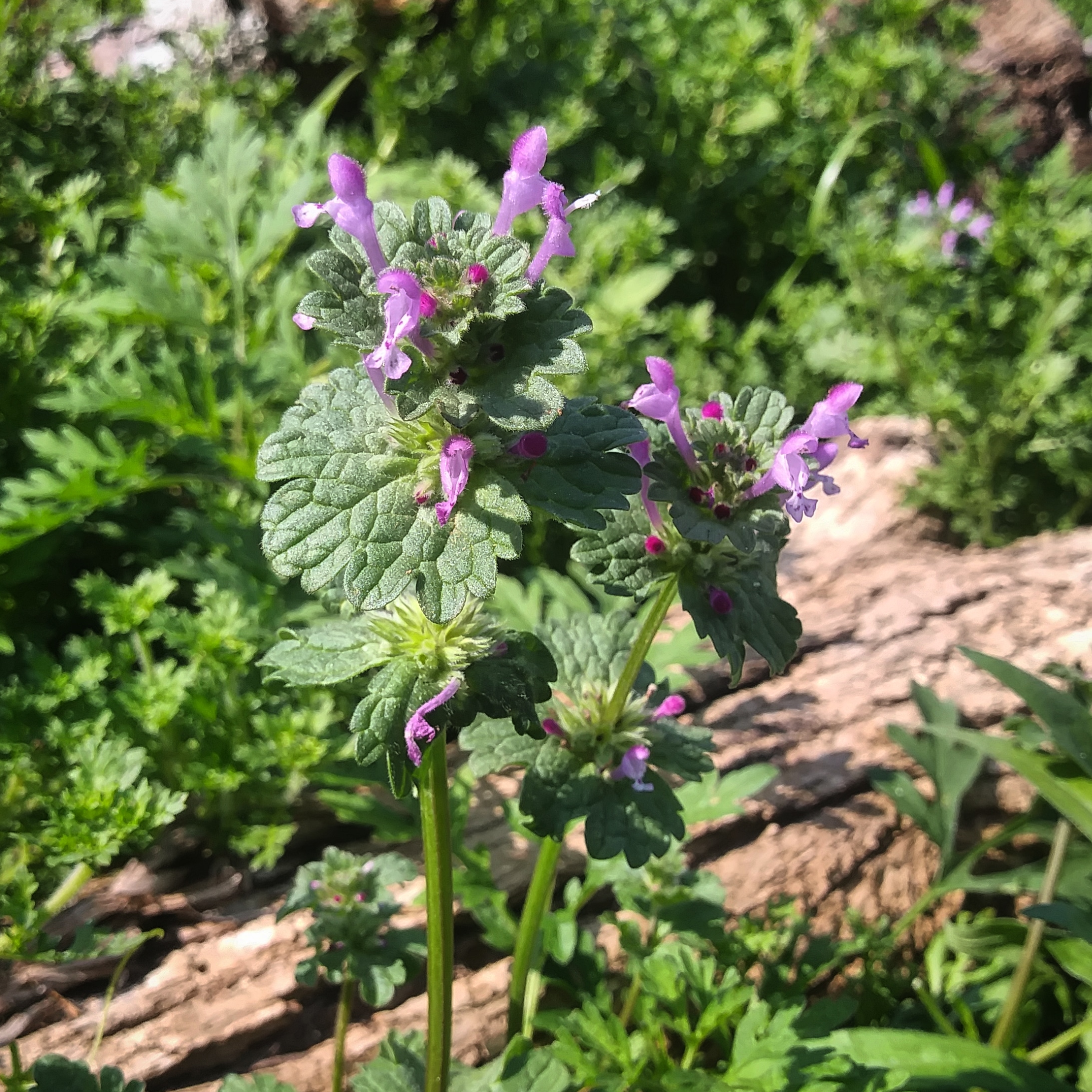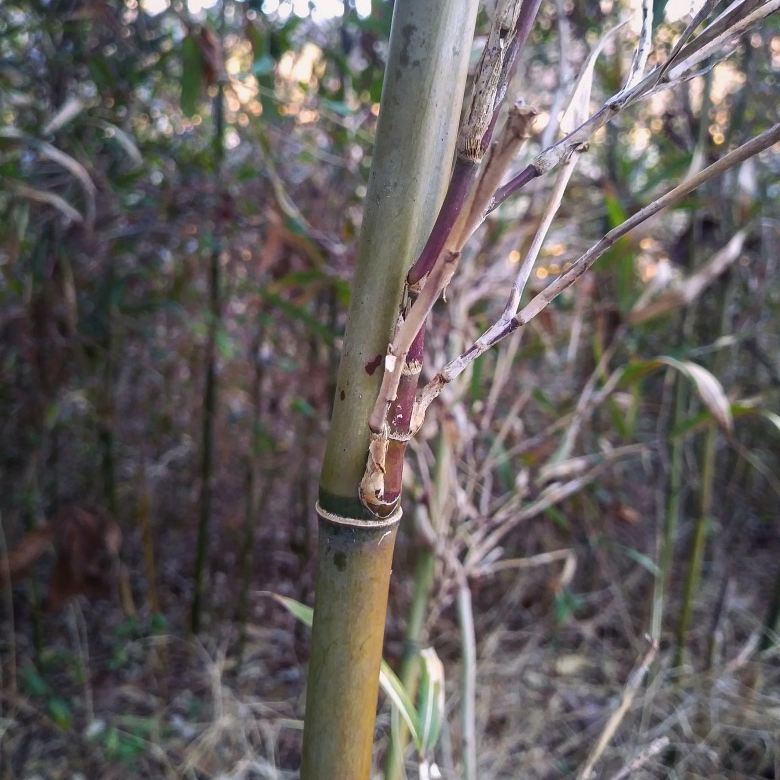“If you’ve ever taken one of our courses at SARCRAFT, there’s a 100% chance we’ve at least mentioned Plantain, if not shown you how to use it. We’ve always said that if you’re going to learn one edible and medicinal plant, it should be this one.”
Read moreInstructor Corps Pro Tip 6/11/19 - Sweetgum Toothbrush
“One of the most important, yet most neglected, aspects of wilderness living is personal hygiene. In our experience, most guys behave like unwashed heathens in the woods and won't shower, shave, or brush their teeth for weeks at a time if they don't have to, but that's a recipe for trouble.”
Read moreWild Edible Wednesday 6/5 - Henbit Deadnettle
“Henbit season is actually tapering off – it prefers cooler temperatures and rarely thrives in the hottest parts of summer except in cool, moist areas. But it’s still out there, so if you want to try it this year, get it while the getting’s good! Like so many of the plants we’ve covered, check your lawn first.”
Read moreWild Edible Wednesday 5/29 - Orange Daylily
“So named because the flowers bloom and die in a day, it’s probably a familiar plant to most of us. I think almost everyone had a grandmother who grew them in her garden, and even if not, you’ve certainly seen them on summer roadsides. They bring back happy memories for me of speeding down unkempt backroads in early summer with the windows rolled down…. “
Read more#WildEdibleWednesday 5/8 - Red Clover
“As medicine advances and more and more compounds are synthesized from natural sources, maybe it’s time we humbled ourselves and realized that the ancients knew what they were talking about.”
Read moreWild Edible Wednesday 4/17 - Purple Deadnettle
“Although it sounds like an alt-metalcore band name (at least to me), purple dead nettle is another common “lawn weed” that you’ve probably walked by every day without knowing what it was. Closely related to Henbit (which we’ll feature in a few weeks) purple dead nettle has a great range of edible and medicinal uses.”
Read moreWild Edible Wednesday 3/13 - Forsythia
“As an edible, forsythia is a Godsend during this time of year. If you do much foraging, you know that late January through the end of March is an extremely lean time.”
Read moreWild Edible Wednesday 3/6 - River Cane
“Where river cane really shines is in bushcrafting. The uses of river cane for projects big and small is limited only by your imagination.”
Read moreWild Edible Wednesday 2/13 - Common Cattail
“Not only is it a four-season edible and a decent medicinal plant, it’s one of the few plants that can truly secure all four of your survival priorities. It’s the Wal-Mart of the swamp – providing food, medicine, building material, and fire starter. We’re talking, of course, about Typha latifolia, the Common Cattail.”
Read moreWild Edible Wednesday 2/6 - Eastern Prickly Pear
“As much as it looks like it belongs in an old Clint Eastwood western, this is, in fact, the only cactus species that is widespread in the Eastern Woodlands. And if you’re lucky enough to find one, it makes a reliable and nutritious year-round wild edible and medicinal plant.”
Read more
Wild Edible Wednesday 1/30 - Striped Wintergreen (Pipsissewa)
“Striped wintergreen’s primary value lies in being a powerful, reliable, year-round medicinal plant. It is a true lifesaving herb in the dead of winter, with a wide range of uses.”
Read more#WildEdibleWednesday 9/26 - American Beautyberry
“The scientists at Ole Miss who discovered callicarpenal first began their research because their grandparents had all used beautyberry leaves to repel mosquitoes. Lo and behold, they were right.”
Read more#WildEdibleWednesday 9/19 - Muscadine
“The bouquet is as follows: It smacks you in the face with a wallop of intense muscadine flavor followed by a wall of cane sugar, finishing with a pure alcohol burn. There are notes of pure muscadine (obviously), oak, citrus, grape Jolly Rancher, ethanol, and a hint of vinegar. The overall experience is jarring, but not at all unpleasant. I dare California to do better.”
Read more#WildEdibleWednesday 8/22 - Staghorn Sumac
Dramatic and exotic-looking with its bright red fruiting bodies, sumac is part of the Anacardiaceae family of plants that includes cashews, mangoes, and pistachios, as well as Brazilian pepper, poison ivy, and poison oak.
Read more#WildEdibleWednesday 8/8 - Mountain Mint
The power of this herb can’t be underestimated, as is evidenced by the reverence in which native Americans and pioneers alike held it. The Choctaw considered it sacred, and swore by it as a last-ditch effort to revive the dying… and even raise the dead.
Read more#WildEdibleWednesday 8/1 - Sarsaparilla
The fact that these plants are valuable as wild edibles and medicinals are evidence that God doesn’t create anything without a purpose, and that everything that grows in the forests and fields has a use… because I absolutely despise them.
Read more#WildEdibleWednesday 7/11 - Golden Chanterelle
I was hiking through Shenandoah National Park in northern Virginia and happened upon a kindly old man and his wife picking mushrooms. I asked what he was harvesting and he replied, “Chanterelles. They’re the best mushrooms in the world. You want some?”
Read more#WildEdibleWednesday 6/27 - Blackberry
“Although they grow all over the world, blackberries are about as all-American as it gets. They’re a part of our culture, especially in the South. I have many fond memories of picking blackberries with friends and family, and then enjoying a cobbler fresh out of the oven with vanilla ice cream that evening.”
Read more#WildEdibleWednesday 6/20 - Bull Thistle
Most plants in the Aster family are beautiful, delicate, meadow flowers that are the kind of thing you’d pick for your lady friend or that an artist would paint a still life of. Not bull thistle. Oh, naw. It looks like it came straight out of Little Shop of Horrors, and if you don’t cut it down, it’ll break into song and try to eat Rick Moranis.
Read more#WildEdibleWednesday 6/13 - Dewberry
Some plants that we’ve covered in the past, while they’ll keep you alive and might even be highly nutritious, really just taste awful. But then there are those that are not only passable, but delicious.
Read more



















